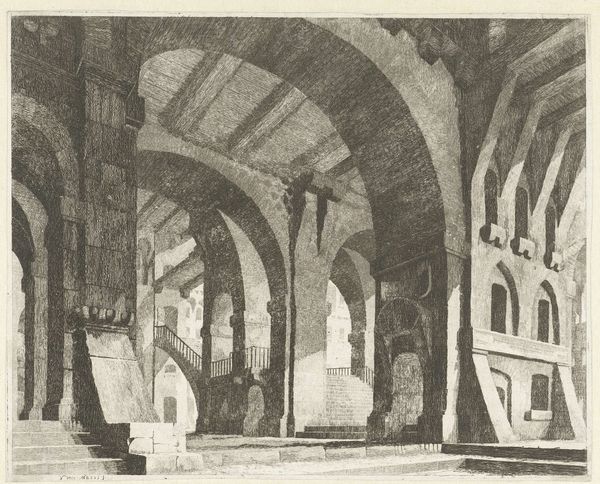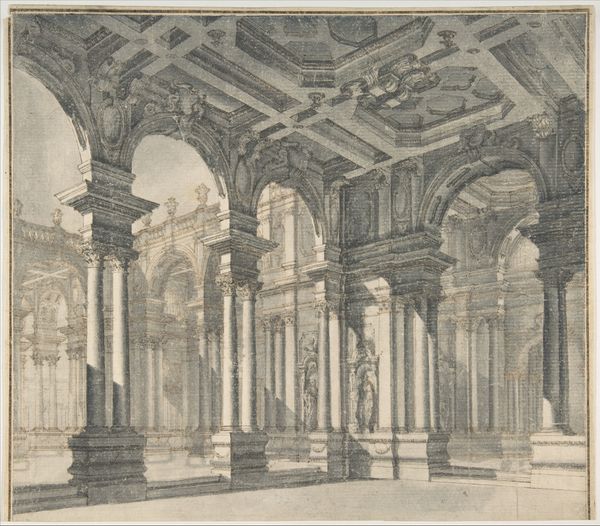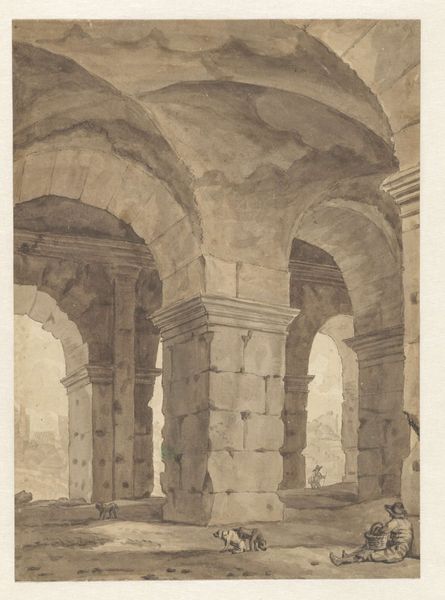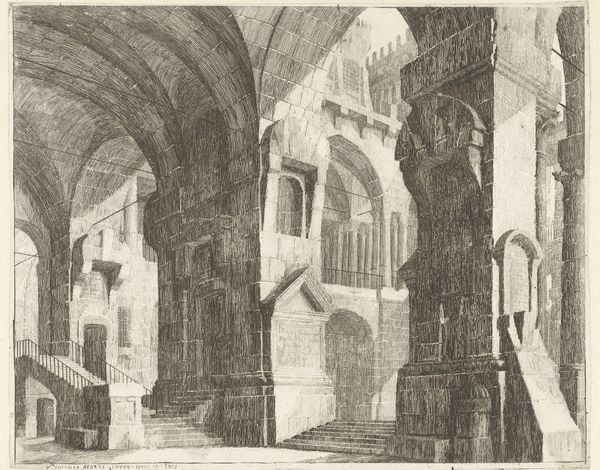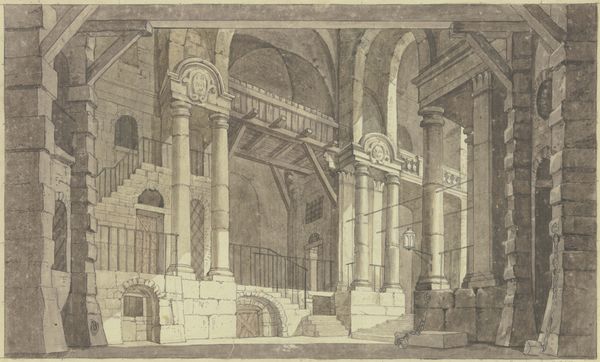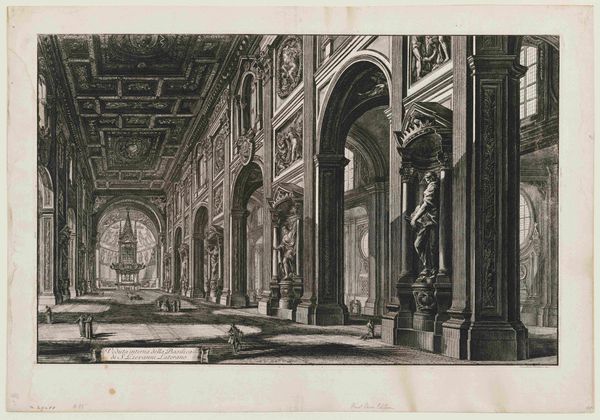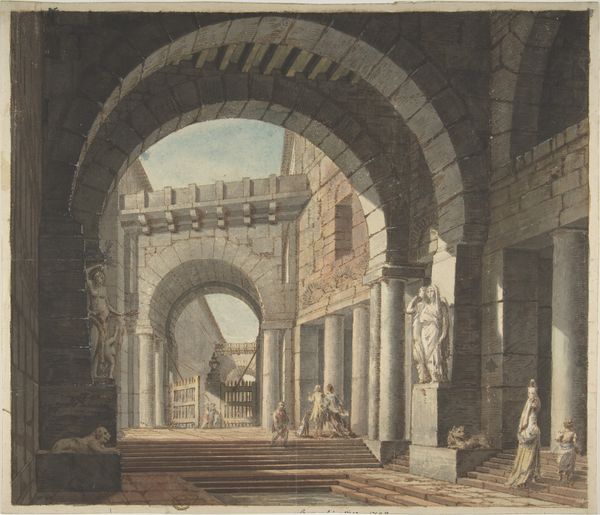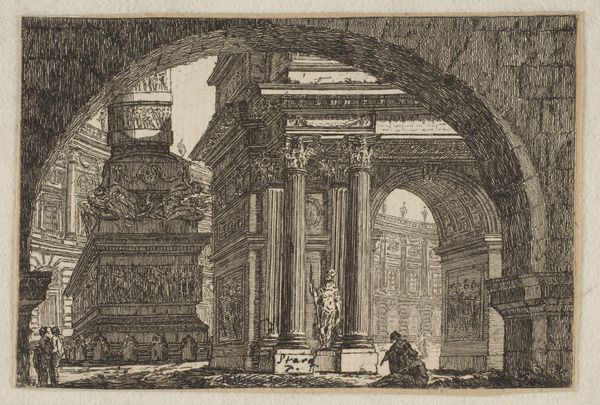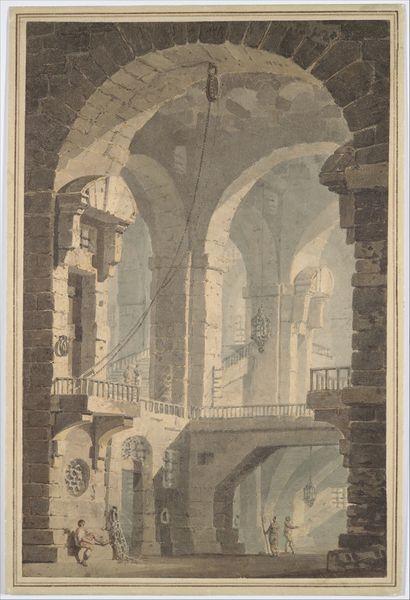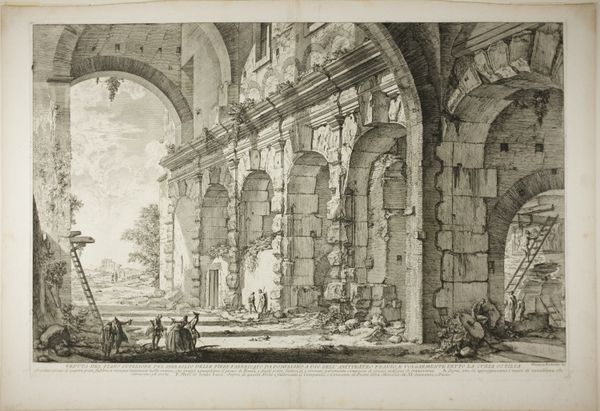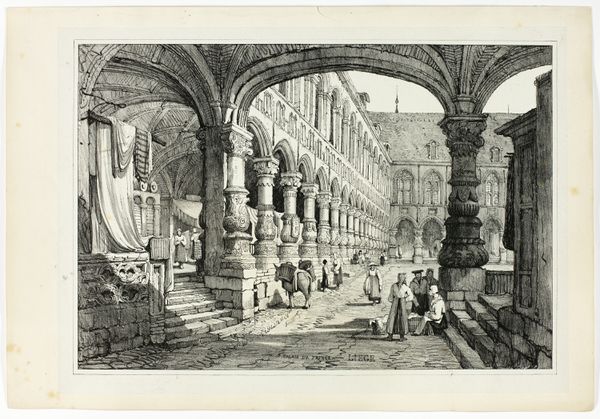
drawing, print, paper, watercolor, ink, architecture
#
drawing
# print
#
sculpture
#
landscape
#
paper
#
oil painting
#
watercolor
#
ink
#
romanticism
#
watercolor
#
architecture
Dimensions: 170 × 249 mm
Copyright: Public Domain
Curator: Here we have an intriguing piece titled “Stage Design,” by Louis Jean Desprez. While undated, it offers a glimpse into the world of theatrical set design of the time, and is composed of drawing and printmaking on paper, using ink and watercolor. Editor: It strikes me as a kind of constructed dream. The palette is so limited, mostly sepia tones, that it feels like looking at a faded memory. You immediately get a sense of the layers – literally and figuratively – of artifice that go into building a world on stage. Curator: Absolutely. The Romantic sensibility is evident, isn't it? Desprez seems less interested in historical accuracy and more drawn to the emotional power evoked by antiquity, creating an atmospheric impression through symbolic architectural elements and sculpture. Editor: I’m curious about the process itself. Notice the delicate ink work contrasted with the broad washes of watercolor. The use of cheaper materials also is so compelling: the drawing emphasizes the transient nature of stagecraft. This isn't meant to last like a painting; it's a tool for fleeting experience. Curator: Yes, and that ephemerality adds to the dreamlike quality. Those repetitive, hieroglyphic-like forms along the beams...are they legible? Are they supposed to be? Or are they just conjuring the idea of ancient knowledge, mystery? Editor: Perhaps they are just texture, a pattern applied by a scene painter to suggest age and history? We must remember these stage sets involve many artisans contributing in different capacities. The division of labor speaks to a proto-industrial practice even in the artistic sphere. Curator: Fascinating to consider! To me, the overall effect borders on the sublime, that sensation of awe mixed with a bit of dread, confronted by vast, unknowable forces rendered in monumental, symbolic form. The past, filtered through imagination and artistic craft. Editor: I find that emphasis on craft very important here. The raw materials and means of production make "Stage Design," in this case, a fascinating reminder of the collaborative and often overlooked labor that breathes life into spectacle. Curator: Looking closely has made me reconsider how artists use symbols of culture not necessarily to record history, but rather to mold the perception of what historical memory represents. Editor: Agreed, I'm drawn to its testament of theater's often hidden and materialized labor.
Comments
No comments
Be the first to comment and join the conversation on the ultimate creative platform.

